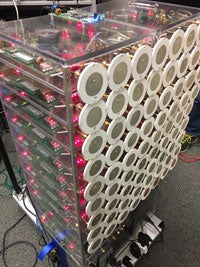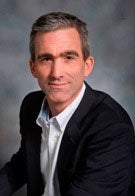
With today’s commercial Wi-Fi access points advertising speeds above 1 Gb/sec, Wi-Fi appears to be well capable of handling today’s traffic demands from mobile and wireless clients. Unfortunately, in dense client populations such as in auditoriums, convent ion centers, and public gathering places, Wi-Fi and LTE can both slow to a crawl, prohibiting video streaming and interactive voice. Moreover, Wi-Fi is yet inadequate for the next generation of demanding applications such as wireless virtual and augmented reality. In this talk, I will describe new foundations for scaling WLAN client density via simultaneous transmission and reception between the access point and multiple clients. I will describe designs, early prototypes, measurement studies, and standards efforts towards realizing this vision. I will focus on challenges in the design of control mechanisms as well as pitfalls that can occur when a legacy single-user uplink is coupled with a multi-user downlink.

Edward Knightly is the Sheafor-Lindsay Profes sor and Department Chair of Electrical and Computer Engineering at Rice University in Houston, Texas. He is an IEEE Fellow, a Sloan Fellow, and a recipient of the National Science Foundation CAREER Award. He has chaired ACM MobiHoc , ACM MobiSys , IEEE INFOCOM , and IEEE SECON . He serves as an editor-at-large for IEEE/ACM Transactions on Networking and serves on the IMDEA Networks Scientific Council. His research interest s are in the areas of mobile and wireless networks with a focus on design , performance evaluation, and at-scale field trials. His group developed the first multi-user beam-forming WLAN system that demonstrates a key performance feature now provided by IEEE 802.11 ac. His group co-developed a clean-slate-design hardware platform for high-performance wire less networks, TAPs and WARP

